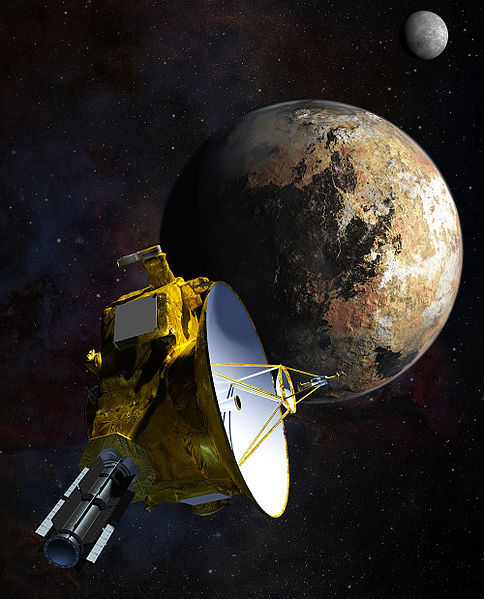Just
like you, I went to school as a kid. And just like you I spent many an hour
sitting in a science classroom somewhere with, among other things, a bright,
colorful poster about the solar system hanging on the wall. And just like you,
I had to take a lesson or two about that very solar system, complete with a
cool project at the end.
To
this day I can name all of nine planets (or eight planets and whatever Pluto
is) quite readily. They are, from the sun outward, Mercury, Venus, Earth, Mars,
Jupiter, Saturn, Uranus, Neptune, and Pluto. Do I get an A?
Most
kids do experience that part of the science curriculum at some point or
another. In fact, the school years are not complete without it!
But,
after the events of the past few days, teachers all over the world will be
pulling down those lovely solar system posters for a bit of a re-write - - in
particular at the far end where little Pluto resides.
I
believe I recall the teacher giving us a lecture on those heavenly bodies,
giving us the scoop, plus some interesting facts on each one. This would be
accompanied by images on screen or in a textbook. And I recall, upon arriving
at the far reaches of the solar system, hearing words to the effect of the
following:
“And
then there’s Pluto, the last planet in the Solar System. It’s tiny and it’s
probably just a big smooth ball of ice because it’s so far from the sun.
There’s also another body near it called Charon. That’s about all we know about Pluto because
it’s so far away that we can’t even really see it through a telescope. There’s
a picture of it in your textbook. Well, moving along . . .”
The
image was of a grainy, irregular, nondescript blob hanging in outer space.
Well,
we know a tad more, now. And we have way, waaaay better pictures.
A
space probe, called “New Horizons”, launched by NASA nine years ago has swept
past that nondescript blob and send us back a gold mine of new information.
So,
listen up teachers. Like I said, there are a few things for you to change on
those Solar System posters.
Size: Begin by re-writing the
estimates about Pluto’s total size. Scratch out the old estimate of 736 miles (1185
km) in diameter, and write in NASA’s new measurement of 1473 miles (2370 km).
That’s a bit of a difference!
Visibility: You can take a
rubber eraser to the section about Pluto being too far away to see. The Probe
has sent back amazing photos of the surface that offer stunningly detailed topographical
information. You can move aside that non-descript blob photo, too, and make
room for photos like the ones below.
Landscape: On that note, please
also ensure to do away with that part that describes Pluto as nothing but a big
smooth ball of ice. Not likely! Although it is rather nippy out there, the
planet is anything but featureless, as that depiction would suggest. The first
few photos have already revealed mountain ranges that rival some of our own
Rockies, and, on Charon, at least one canyon that they say is comparable in
size to our famous Grand Canyon. Makes you want to do a little exploring of
your own, doesn’t it?
It’s
also making scientists question their understanding of seismic activity and its
causes. After all, it was clearly that kind of activity that created these
features, but, according to the scientists, not all of the required elements -
- or at least what we thought were required elements - - for that kind of
upheaval are present on that far away world.
Nevertheless,
it’s pretty amazing to think about, isn’t it? Mother Nature doing her loud and
dramatic best out there in the farthest reaches with not a living soul around
to see.
Alrighty.
You can go ahead and put that poster back on the science classroom wall, now,
if you like, but please use some of that easy-to-remove temporary tape. The New
Horizons probe is still sending back information and scientists are still
scrambling to analyze it all.
It
may not be long before you have to bring that poster back down again.
Photo by NASA/JHU APL/SwRI/Steve Gribben

Comments